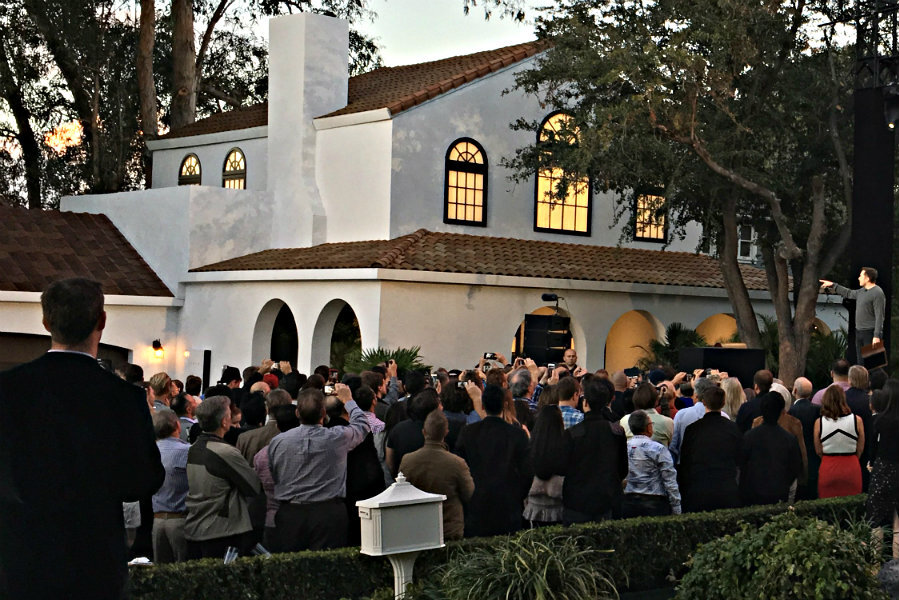Can Elon Musk make solar shingles cool?
Loading...
Billionaire inventor Elon Musk took to a Universal Studios Hollywood backlot last night to hype Tesla’s newest product release - a solar roof that is not only tech-forward, but fashion forward.
Mr. Musk demonstrated the new technology to investors, showcasing “solar roofs” paved with shingle-sized solar panels, seamlessly integrated into the aesthetics of set homes that once belonged to ABC’s “Desperate Housewives.”
Industry insiders say that like some of Musk’s other technological ventures, solar integrated roof technology is not groundbreaking on its own. Tesla’s edge, however, could be its ability to make solar roofs appealing and accessible to homeowners.
“While I applaud Mr. Musk and have great admiration for him and his technologies, integrated roofs are not particularly new,” said Scott McIntyre, the chief executive officer of a Tampa based company that has been installing integrated roofs for years. “What Tesla-SolarCity is trying to do is make it aesthetically attractive.”
“He’s got a great marketing machine,” Mr. McIntyre tells The Los Angeles Times. “He knows how to create hype.”
As the sun set on the Desperate Housewives set, Musk showed hundreds of visitors how perfectly the Tesla solar panels blended into the roofs. Many in attendance could not tell that there were solar panels present at all.
Musk’s presentation contained few details about the potential cost for Tesla’s solar shingles, instead focusing on the aesthetics and green possibilities of such a roof.
"How do we have a solar roof that is better than a normal roof, looks better, last longer?" said Musk. "You want to pull your neighbors over and say 'Check out this sweet roof.' "
Production of the tiles is slated to begin in 2017, Musk says, and will include four options to fit different architectural styles.
Solar experts say that looks are key when marketing solar panels to customers. About one-third of people surveyed in 2014 by solar provider Lumeta said that the aesthetics of solar panels were extremely important or very important.
“People spend a lot of time trying to create an attractive home,” said chairman of the industrial design graduate program at the ArtCenter College of Design in Pasadena, Andy Ogden, according to the Los Angeles Times. “They don’t want funny glass boxes stuck on one side of their roof.”
Approximately 5 million homes get new roofs each year, said SolarCity executive and Musk’s cousin Lyndon Rive. Musk also chairs SolarCity, America’s top solar provider.
Musk has long sought greater collaboration between SolarCity and Tesla, which culminated in Tesla offering to buy SolarCity in August. Musk says his long-term vision includes a fleet of electric cars powered by a solar grid.
At home, Tesla solar roof users will generate and store solar energy in a battery called Powerwall. The battery can be stored inside or outside, and will power homes around the clock with energy gathered during daylight hours.
Peter Rive, another cousin and co-founder of SolarCity, said he expects solar roofs to have a five percent share of the roofing market within two years.








